
Final Rendering of Artemis Uniform.
The Artemis Collection is a proposal for a series of garments to be worn by the crew of Artemis Missions II and III. The collection proposed was designed to optimize comfort and seamlessly incorporate additional utilities required for space travel.
My research and final collection were presented to the NASA Soft Goods Lab, NASA textile and space architecture engineers and designers, NASA critic and RISD professor Michael Lye, and NASA astronaut Don Pettit.
To support my research I was awarded the Rhode Island Space Grant.
Throughout the course of internship I devised and worked on 3 independent projects--The Artemis Collection, Microgravity Footwear, and the Artemis Wayfinder.
--
Development of this project continued during Fall 2021 when I took the RISD Course, "Pack You Bags, We're Headed to the Moon" taught by Catherine Andreozzi.
Press related to the course:
The Challenge



The garments proposed for the Artemis Mission needed to full-fill the following technical criteria in a visually impactful way:
The Artemis Collection Shall:
1. Be made from materials that conform to exploration atmosphere safety standards.
2. Maximize the lifespan of each item of clothing.
3. Minimize the overall mass sent up into orbit.
4. Incorporate modifications that increase ease of dressing.
5. Increase the comfort of astronauts in the microgravity environment.
6. Integrate RFID and radiation sensors.
The Artemis Collection Should:
1. Integrate biomedical sensors: heart rate, carbon dioxide, temperature, and breathing rate.
2. Increase the comfort of astronauts: temperature fluctuation accommodations, pinch point relief, easy to use while sleeping or in the lavatory, etc.
3. Incorporate modifications that assist in holding tools/devices.
4. Accommodate a wide variety of body types.
5. Allow for individual customization of the garments.
Challenge Breakdown

To begin this challenge, I identified the regions of the body where the challenges outlined in the design criteria occurred.

Next, I broke down the structure of a garment in order to understand all the different levels of structure solutions could be applied.

Lastly, I wanted to make sure to consider the impact of body posture might have on my design. Unlike on earth, the most frequently adopted posture in microgravity is not standing, but rather the sitting position or the neutral body position (midway between standing and sitting).
Research
In order to begin my design process I conducted research on the following areas:
1. Artemis mission structure and interior environments.
2. Artemis mission apparel.
3. Uniform audience and end-users.
4. Apollo missions apparel and textiles.
5. ISS apparel and textiles.
6. Intra-vehicular activities impacted by apparel.
7. RFID and radiation and biomedical sensors.
8. Impact of microgravity on the human body.
9. Garment related calculations.
To support my research I consulted with textile, space architecture, and electrical engineers working for NASA.

Key takeaways from research.
Design Development
Synthesizing the research and using the frameworks derived earlier I began brainstorming and exploring potential solutions to the design challenges outlined in the design criteria.
Inspiration was derived from a variety of sources, from the original strategies that were employed during the Apollo Mission or aboard the International Space Station (ISS) to the design modifications wheel chair users have made to their clothes.
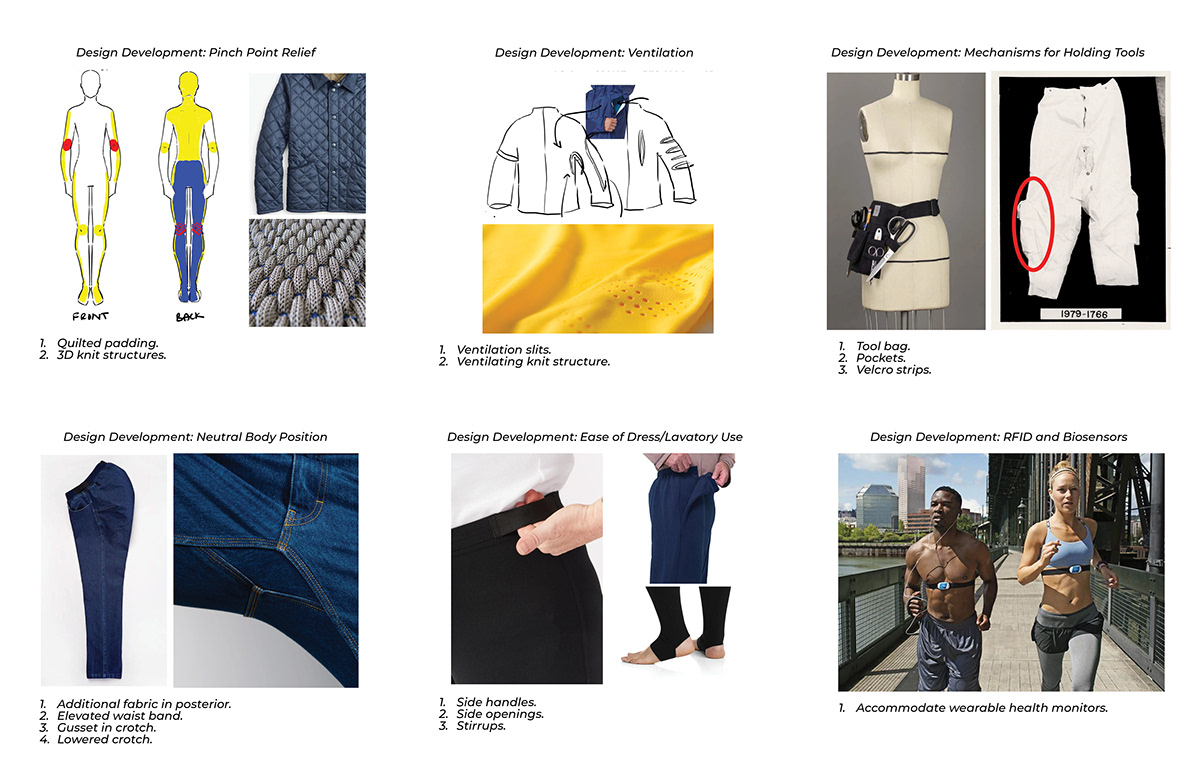
Condensed design development.
Final Solution
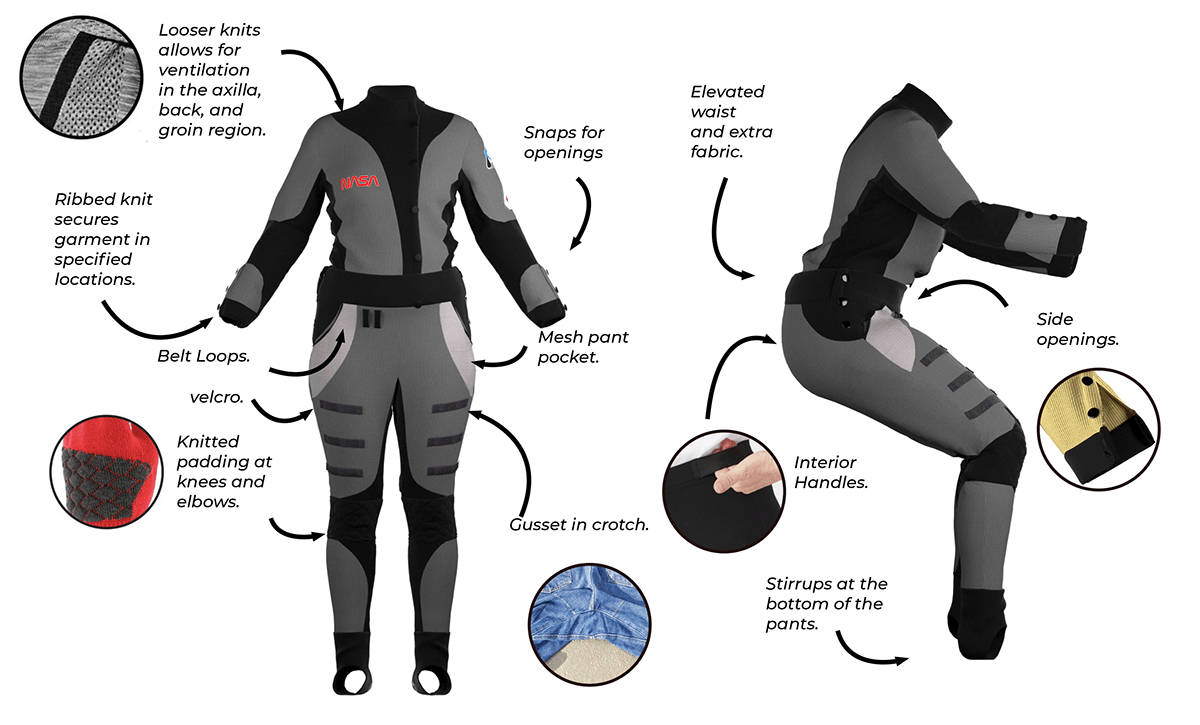
The final design shown above seamlessly incorporates all the selected solutions outlined and employs color blocking and graphic shapes for functional reasons (for example darker colors in areas where sweat may show) and for the visual purpose of creating a bold, strong image.
The final design can also be converted to one with shortened sleeves and pant legs via removable forearm and calf pieces (see right image below).
I also designed a tool belt that works seamlessly with the everyday garment and allows for easy organization and storage of tools.
In addition to this everyday garment I presented an exercise garment as well as an optional undergarment design. Both garments utilize some of the same strategies applied to the everyday garment.
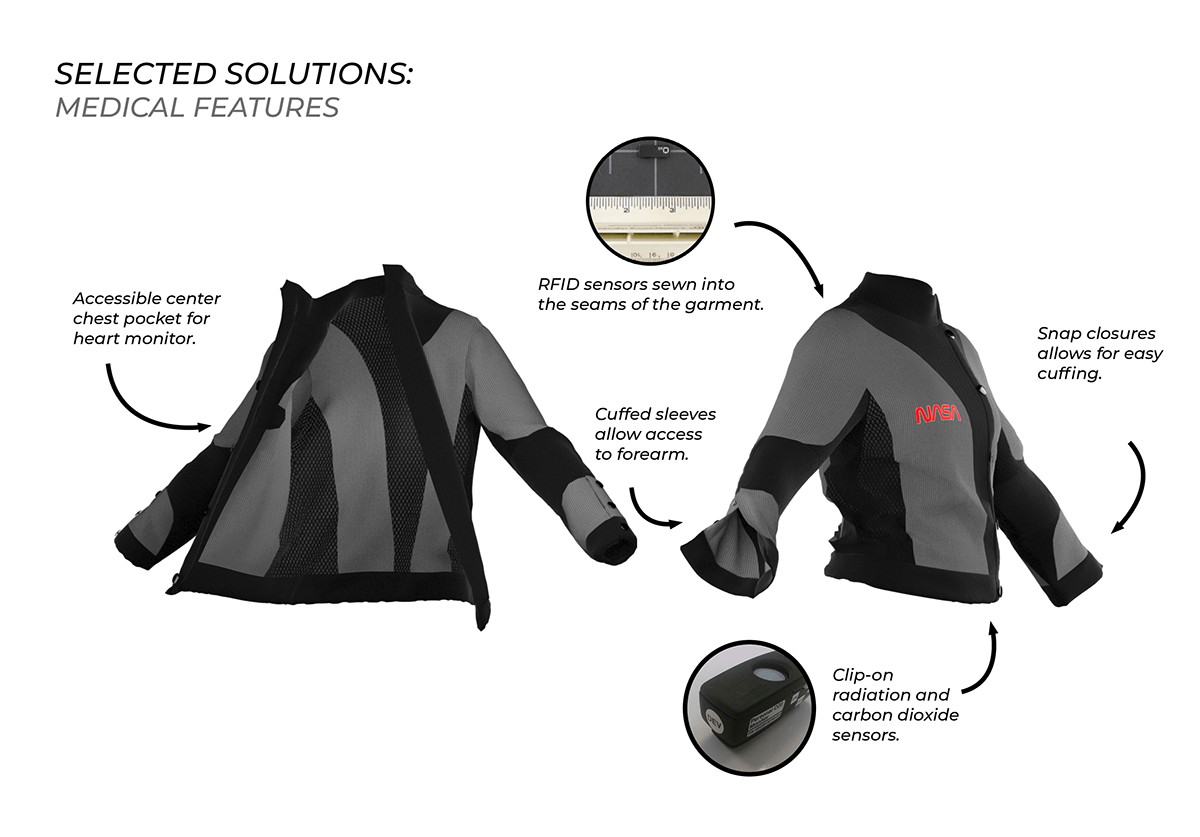
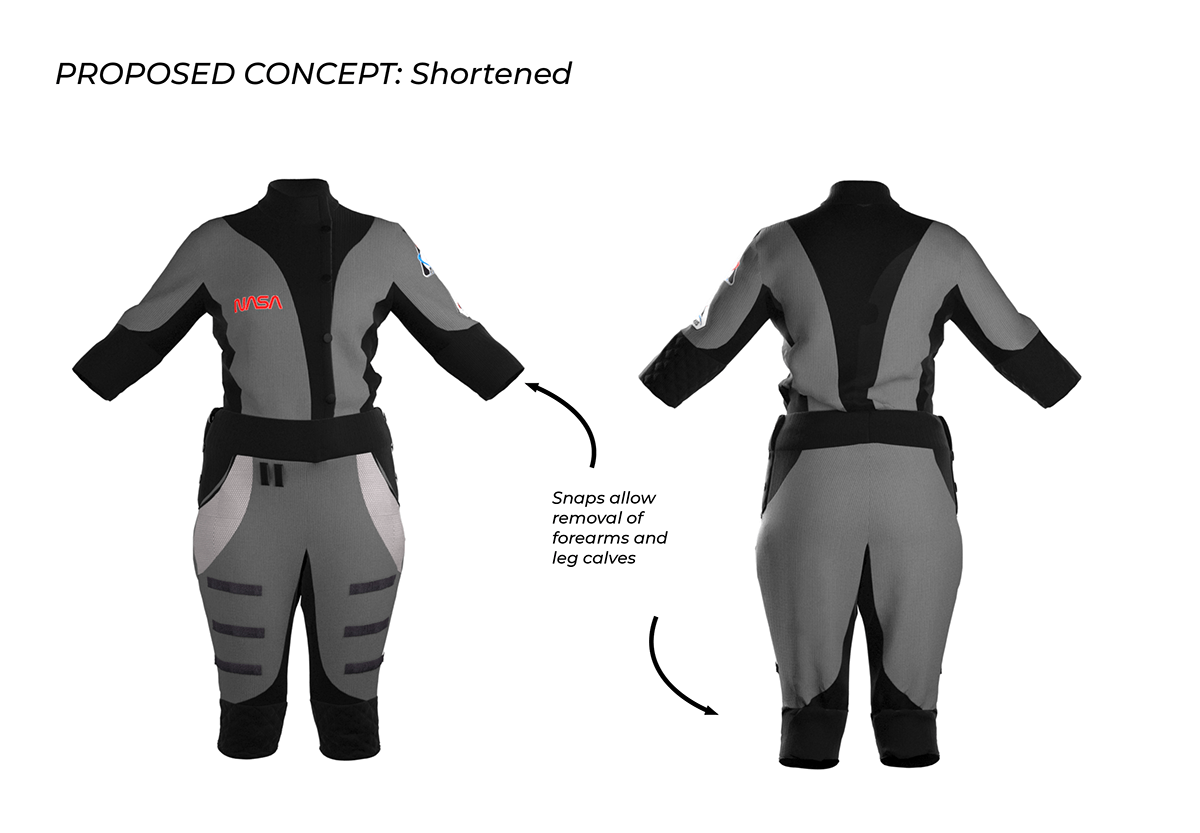


Proposed exercise garment.
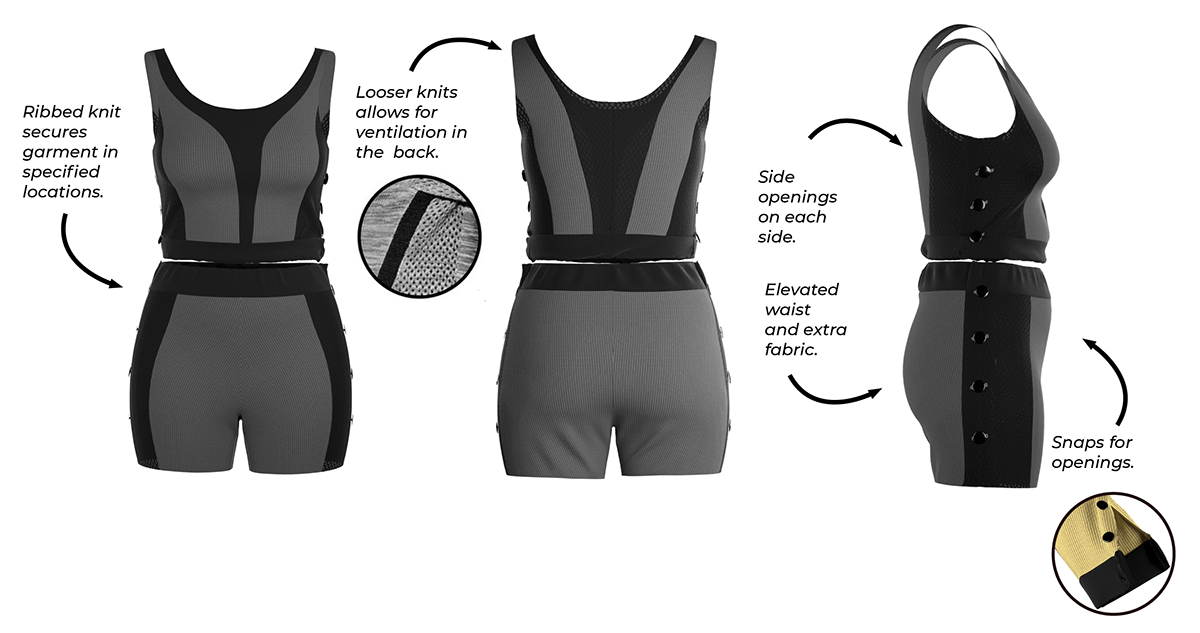
Proposed optional undergarment.
For the final line up I demonstrated how the different garments proposed can be mixed and matched to suit the individual astronauts tastes.
The color story I proposed is composed of soft greys and browns that derive from the natural colors of sheep's wool. The choice of this color pallet was both practical and aesthetic. Utilizing the natural color of the fibers avoids having to use any dyes, that could off-gas, and generating additional costs in production. The natural hue of the fibers will also provide the astronauts with a little reminder of home on their long journey.
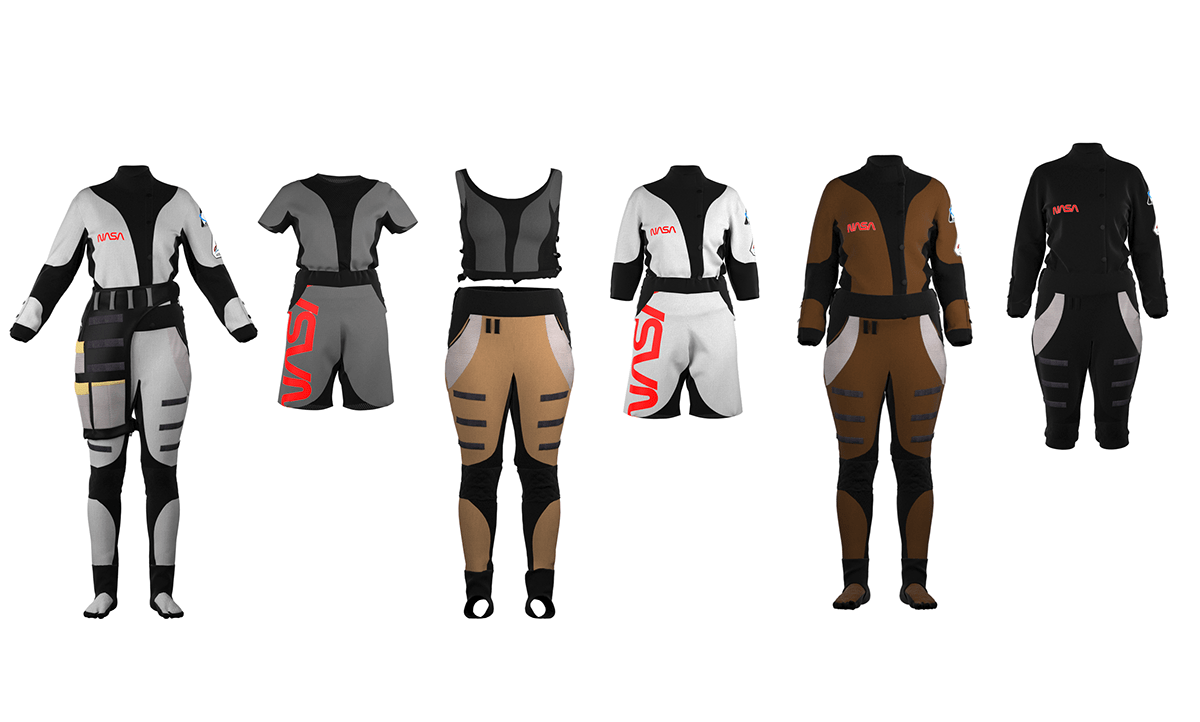
Additional colorways and garment combinations.
Experiment with VR to simulate the Artemis Uniform
aboard the International Space Station (ISS).
VR Experiment to simulate the Artemis Uniform
next to the Orion Capsule.